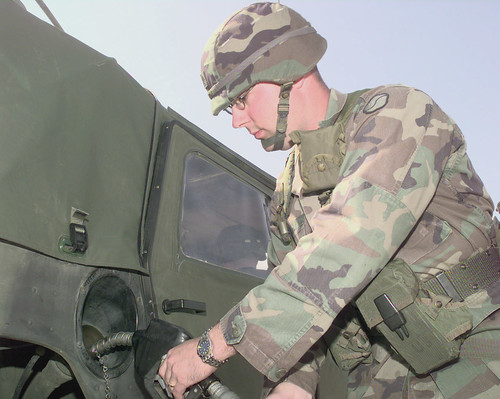Wednesday, April 15, 2009 – ISSN 1529-1057
TIC for Traffic Plans and Simulation – Create and Operate with Live and Historic Data
TIC can be used in off-line mode with historic data to create, simulate, and compare pre-defined traffic plans for expected traffic situations. TIC can then be used in on-line mode with both live and historic data to monitor the network. Once a situation is identified, TIC can recommend the best plans to operators within minutes, and if an unexpected situation is identified, TIC can be used to create and recommend new traffic plans, such as during evacuations. TIC can consider the complete road network, traffic patterns, weather, work zones, social events, sensors, CO2, NOx, and particle emissions, and more. TIC is a commercial off-the-shelf (COTS) solution proven in over 100 projects operating worldwide, and can be deployed faster, more affordably, and with less risk than build-your-own solutions. See the new TIC3 at ITS America in GEWI booth #329 or contact jim.oneill@gewi.com to discuss your requirements.
AVIATION
1) Business Aviation Taps Twitter
Link to story in Aviation Week:
http://www.aviationweek.com/aw/generic/story_channel.jsp?channel=busav&id=news/TWITTER041409.xml&headline=Business%20Aviation%20Taps%20Twitter
2) In-flight Wi-Fi Prices Still Up in the Air for Alaska Airlines
Link to story in eWeek:
http://www.eweek.com/c/a/Mobile-and-Wireless/Inflight-WiFi-Prices-Still-Up-in-the-Air-for-Alaska-Airlines-287834/
BUSES
3) Cameras to Keep Watch on Muni Bus Fleet in San Francisco
Link to story in the San Francisco Chronicle:
http://www.sfgate.com/cgi-bin/article.cgi?f=/c/a/2009/04/14/BALQ172H2I.DTL
CARTOGRAPHY
4) GIS Helps State Understand ‘Unintended Things,’ Says California’s Geographic Information Officer
Link to story in Government Technology:
http://www.govtech.com/gt/articles/639802
Link to video from the California Office of the Chief Information Officer:
http://www.youtube.com/watch?v=k-2WIR8ORtc&feature=channel_page
ELECTRONIC TOLLING
5) Taiwan Freeway ETC Contract Under Review
Link to story in the Taipei Times:
http://www.taipeitimes.com/News/taiwan/archives/2009/04/16/2003441213
GPS / NAVIGATION
6) China Launches Satellite for Positioning System
Link to IDG News Service story:
http://www.networkworld.com/news/2009/041509-china-launches-satellite-for-positioning.html
OTHER
7) Albuquerque Newspaper Sues New Mexico DOT Over Public Records
Link to AP story:
http://www.elpasotimes.com/newupdated/ci_12146386
8) Traffic Knowledge Shared Across Canada Through University of Regina Project
Link to story in the Leader-Post:
http://www.leaderpost.com/Technology/Traffic+knowledge+shared+across+Canada+through+project/1499247/story.html
Link to news release from the University of Regina:
http://www.uregina.ca/news/newsreleases.php?release=568
9) Flying High
Profile of traffic reporter, Amelia Earhart.
Link to story in Denver Woman:
http://www.denverwoman.com/1007/rolemodel.html
ROADWAYS
10) Results of Deer Reflectors Inconclusive so Far
Link to story in The Daily Republic:
http://www.mitchellrepublic.com/articles/index.cfm?id=32801
11) Caltrans Criticized for Bypassing County Input on I-80 Detour
Link to story in the Sierra Sun:
http://www.sierrasun.com/article/20090415/NEWS/904159989/1066
12) Yale Launches Animated ‘Smart Streets’ Traffic Safety Education Web Site
Link to story on Design New Haven:
http://www.designnewhaven.com/2009/04/yale-launches-smart-streets-traffic.html
Link to Smart Streets: http://www.yale.edu/smartstreets/
13) The War on Short Yellows
Link to commentary in The Wall Street Journal:
http://online.wsj.com/article/SB123975737976619187.html
SAFETY / SECURITY
14) Airport Credentials: What’s Going to Happen?
Many organizations are working on bringing biometrics to airports but obstacles remain.
Link to story in ContactlessNews:
http://www.contactlessnews.com/2009/04/14/airport-credentials-whats-going-to-happen
15) The Carlet Letter? New Jersey Tags New Drivers with Decal
Link to AP story:
http://www.google.com/hostednews/ap/article/ALeqM5jZ9H_nxvePTsGxo-LEtkmgOHLAHwD97J3P500
TRANSIT
16) Now Boarding the Bus: TV
City of Raleigh first to deploy mobile DTV.
Link to story in The News & Observer:
http://www.newsobserver.com/news/story/1486064.html
Link to story and video report on WRAL-TV:
http://www.wral.com/news/local/story/4948031/
17) SEPTA Charts New Route on Google
Link to story in Metro:
http://www.metro.us/us/article/2009/04/15/04/2415-85/index.xml
TRAVELER INFORMATION / TRANSPORTATION MANAGEMENT
18) Global Traffic Network Provides In-Air Eye for Radio
Link to story in Radio World:
http://www.radioworld.com/article/78504
19) Trafficmaster Preps Mobile Phone Drive
Link to story on Register Hardware:
http://www.reghardware.co.uk/2009/04/15/trafficmaster/
VEHICLES
20) Abortion Debate Moves to Special License Plates
Link to AP story:
http://www.usatoday.com/news/nation/2009-04-14-license-plates-abortion_N.htm
News Releases
1) Toronto Transit Commission Extends Next Train Arrival Information
2) ITS Georgia Starts Twitter Page
3) US Transportation Security Administration Announces Appointment of New Head of Strategic Communications
Upcoming Events
International Conference on Models and Technologies for Intelligent Transportation Systems – June 22-23 – Rome
http://w3.uniroma1.it/its2009/
Today in Transportation History
1924 **85th anniversary** – Rand McNally published its first road atlas, the Auto Chum.
http://www.randmcnally.com/rmc/company/cmpTimeLine.jsp?cmty=0
=============================================================================================
The Transportation Communications Newsletter is published electronically Monday through Friday.
To subscribe send an e-mail to: TCNL-subscribe@googlegroups.com
To unsubscribe send an e-mail to: TCNL-unsubscribe@googlegroups.com
TCN archives: http://groups.yahoo.com/group/transport-communications
Questions, comments about the TCN? Please write the editor, Bernie Wagenblast at i95berniew@aol.com.
© 2009 Bernie Wagenblast






 “The paradigm shift goes from a car receiving information only to a car communicating bi-directionally with its environment. The car will become an open system and the car industry will see a change in much the same way that mainframe computer vendors and incumbent telecom operators saw their world change within a decade. We invite all the bright minds to create the best solution and to test them in an open challenge. Who will become the Microsoft of the car operating system? It will take decades, five system generations of evolution, but the automobile will become a real auto (auto) mobile.”
“The paradigm shift goes from a car receiving information only to a car communicating bi-directionally with its environment. The car will become an open system and the car industry will see a change in much the same way that mainframe computer vendors and incumbent telecom operators saw their world change within a decade. We invite all the bright minds to create the best solution and to test them in an open challenge. Who will become the Microsoft of the car operating system? It will take decades, five system generations of evolution, but the automobile will become a real auto (auto) mobile.”




